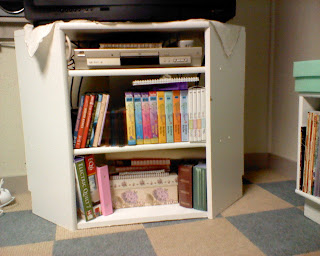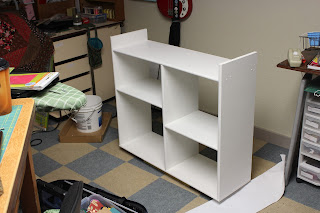After all the traveling and building, I finally pick up some fabric to complete a couple of projects. First are a set of hot pads. The blocks are from Eleanor Burns
Day & Night. I made a pillow runner for my Mom and these were the left over pieces. These are thick, very thick hot pads which make great gifts.
Hot Pad “Filling”
Materials:
Lots of scrap strips of varying widths(1/2" to 1 1/2") and lengths.
Foundation approximately 1” larger than your desired finished size. It can be any cotton fabric.
1. Place one strip at the right edge of the foundation.
2. Lay the second strip so that it overlaps the first and stitch the length of the strip. You can use a straight or zig zag stitch.
3. Lay the third strip
so that it overlaps the second and stitch.
4. Continue adding strips until you have covered the entire foundation.
5. Rotate the block and add strips just as you in Steps 1-4 until the entire square is covered.
6. Repeat two more times. You will have 4 layers plus the foundation( 5 total). This is your hot pad “filling”. DO NOT trim. When you have completed your hot pad “crusts”, you will trim to size.
Hot Pad “Crusts”
You will need 2 “crusts” for each hot pad, which can be made from any block pattern. If you have orphan blocks this is a great way to use them.
1. Take each of your blocks and quilt it to 1 layer of batting. The batting should 100% cotton or 80-20 cotton/poly, but NOT 100% polyester, as it could melt. Threads used should also be 100 % cotton.
2. When you have finished quilting, trim your “filling” and “crusts” to the desired size.
3. Layer crust right side down, filling, crust right side up. Baste together the edges of the three layers.
The layers of the hot pad will be held together with the binding.
4. Finish using your favorite binding method.
The second project finished was
Strip Twist from Bonnie Hunter at Quiltville. I love making scrap quilts and her patterns are a lot of fun. I really like taking fabric that might be considered "trash" worthy and turning it into something useful. If it's beautiful as well, all the better.
I tried to make the quilting in the inner border look like a braid. The corners presented a challenge, but overall I am satisfied. Each Half-Square of each block had feathers as seen here. The outer border had piano key quilting.
Til next time,
Mary



































